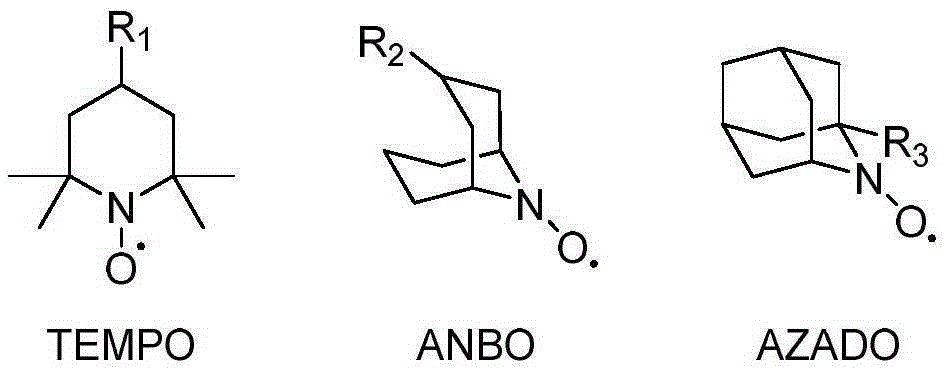Method for preparing aldehyde ketone by catalyzing carbon-carbon double-bond oxidative cleavage
A technology of oxidative cleavage and carbon double bonds, applied in the field of chemical engineering, can solve problems such as low selectivity of by-products, waste discharge, and environmental pollution of metal ions
- Summary
- Abstract
- Description
- Claims
- Application Information
AI Technical Summary
Problems solved by technology
Method used
Image
Examples
Embodiment 1
[0014] Add 0.05mmol of ABNO, 0.05mmol of FeCl3, 0.5mmol of α-methylstyrene, and 1mL of acetonitrile into a Schlenk bottle as a solvent, oxygen bulbs as an oxygen source, and stir and react at 60°C for 12h to obtain the target The product, the chromatographic yield is 90%.
Embodiment 2
[0016] Add 0.05mmol of ABNO, 0.05mmol of FeCl3, 0.5mmol of 4-methyl-α-methylstyrene, and 1mL of acetonitrile into a Schlenk bottle as a solvent, oxygen bulbs as an oxygen source, and stir the reaction at 60°C for 12h , the target product can be obtained with a chromatographic yield of 89%.
Embodiment 3
[0018] Add 0.05mmol of ABNO, 0.05mmol of FeCl3, 0.5mmol of 4-methoxy-α-methylstyrene, and 1mL of acetonitrile into a Schlenk bottle as a solvent, oxygen bulbs as an oxygen source, and stir the reaction at 60°C After 12 hours, the target product can be obtained with a chromatographic yield of 93%.
PUM
 Login to View More
Login to View More Abstract
Description
Claims
Application Information
 Login to View More
Login to View More - R&D
- Intellectual Property
- Life Sciences
- Materials
- Tech Scout
- Unparalleled Data Quality
- Higher Quality Content
- 60% Fewer Hallucinations
Browse by: Latest US Patents, China's latest patents, Technical Efficacy Thesaurus, Application Domain, Technology Topic, Popular Technical Reports.
© 2025 PatSnap. All rights reserved.Legal|Privacy policy|Modern Slavery Act Transparency Statement|Sitemap|About US| Contact US: help@patsnap.com



